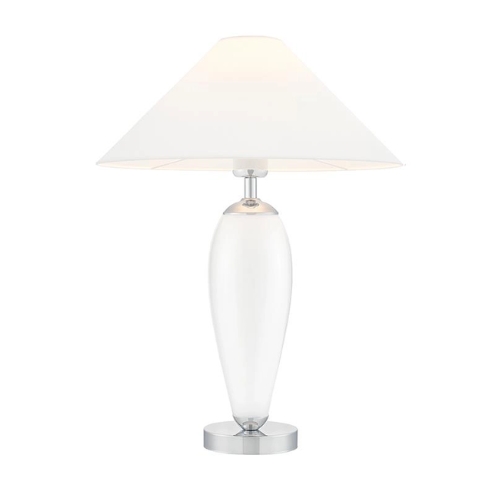Lampshade lamps - which interiors fit best and which lampshade to choose?
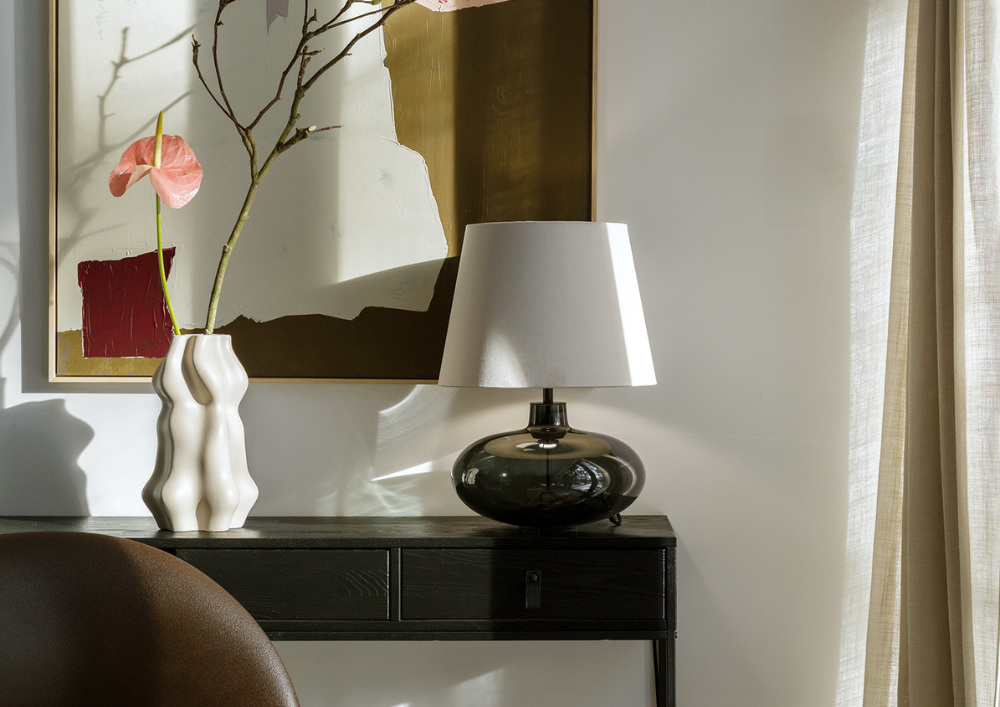

Lampshade lamps - a stylish addition to beautiful interiors
If you are looking for a way to add elegance and beauty to your interior, lampshade lamps are an excellent choice. It's lighting that impresses with its unique style and functionality. Regardless of the style you prefer, there are plenty of options to suit every taste and interior. Lampshade lamps are not only decorative, but also an excellent source of light. The lampshades help diffuse the light, creating a pleasant atmospheric illumination that gives the room a unique character. The size and shape of the lampshade can affect the way light is diffused and create interesting visual effects.
The first step to choosing the perfect lampshade lamp is to determine our needs and understand the function of lighting. Whether you plan to use the lamp primarily for reading, relaxation or decoration? Do you prefer bright, intense light, or more subdued and romantic? By asking yourself these questions, you will be able to choose the right lampshade lamp that meets your expectations both in terms of aesthetics and function. Also check out our comprehensive table lamp selection guide and make sure you know all about these atmospheric light sources.
What role table lamps play in interior lighting?
Lighting can perform several functions in interiors:
- illuminate a given area (the most obvious and basic function of lighting)
- provide the light necessary for the activities in question (work lighting)
- building an atmosphere, a sense of warmth and coziness, creating a climate
- boost interior design
The main task of table lamps, is to build a climate in the interior, to warm it up and create a space that soothes the senses, allows its occupants to calm down, de-stress, relax after a hard day's work. Table lamps build an intimate atmosphere, providing light that is only meant to illuminate the darkness, not illuminate the interior.
Table lamps acting as bedside lamps, usually placed symmetrically in a pair on both sides of the bed, allow us to calm down before bedtime, build a romantic atmosphere in the bedroom, accompany us in performing the last, and in winter also the first activities of the day.
According to the principle of layered lighting in interiors, lighting should be designed so that the light sources in the interior are at different levels. That's why it's so important to include different types of lamps - table lamps, standing lamps, pendant lamps and wall sconces - in the design, and it's worth keeping in mind as early as the planning stage of the interior electrical system. Nothing frustrates homeowners more than exposed cables stretching along baseboards from the outlet to the dresser where we want to set decorative table lamps, or having to get up from a warm bed to turn off the headlight where we were reading a book.
Lampshade lamps - a brief history and overview of materials
Ever since Edison patented the incandescent light bulb in 1879 and it became necessary to tame this very harsh, bright, unfriendly source of light, table lamps have taken on a whole new - because decorative - face. In the first half of the 19th century, before Edison's lamps, consisting of a base and a bulb crowning it, arrived in homes, lampshades were made of glass. After the eternal discovery and introduction of incandescent lamps into the homes of English burghers and ladies, the history of the lampshade gained momentum, and the paper lampshades introduced at the very beginning quickly gave way to textile lampshades - initially very decorative, Victorian, and therefore rich in ornamentation, contrasting trimmings, beads and tassels.
Nowadays, in the era of minimalism, whose domain is the simplification of forms of expression, it is rare to find such richly decorated fabric lampshades (unless in glamour, modern classic, vintage or retro interiors), and lamp designers focus rather on the harmonious and interesting matching of the lampshade to its base, on the high quality of the material, its color, texture or the way it is finished.
For the production of textile lampshades, such materials are most often used:
- velour, velvet or velvetette
- satin
- flax
- cotton
- silk
- as well as PVC plastic with fabric texture.
The choice of fabric determines the degree of light transmission, the character of the lamp, as well as its style. Lampshades made of fleshy, plush fabrics (e.g., velour) are quite thick and do not allow light, the beams of which propagate only upward and/or downward, which builds a cozy, intimate atmosphere. Lampshades made of thinner fabrics, naturally let more light through, making them suitable for reading, for example.
Lampshade lamps vs. style in the interior
Lampshades come in a variety of types and styles, so you can easily match them to the style of your choice. Here are some popular materials used in the manufacture of lampshades, detailing the interior styles to which they fit best:
- Fabric lampshades: Made of different types of fabrics, such as silk, cotton or linen. The fabric lampshades are soft to the touch and add elegance to interiors in the style of modern classics, glamour or retro. Linen or thick-weave fabric lampshades are also excellent additions to interiors japandi or rustic style.
- Paper lampshades: Made of thin, fine paper that creates subtle illumination. Paper lampshades are popular japanese and Scandinavian styles.
- Metal lampshades: Made of metal, often in an industrial style. Metal lampshades add a raw feel to an interior and are often chosen for modern, brutalist, industrial and minimalist arrangements.
- Glass lampshades: Made of transparent or colored glass, which creates striking illumination. Glass lampshades are often used in classic and luxurious penthouse style interiors.
The choice of lampshade depends on personal preference and interior style. It is important to match the lampshade with the rest of the elements in the room, such as furniture, wall colors and accessories.
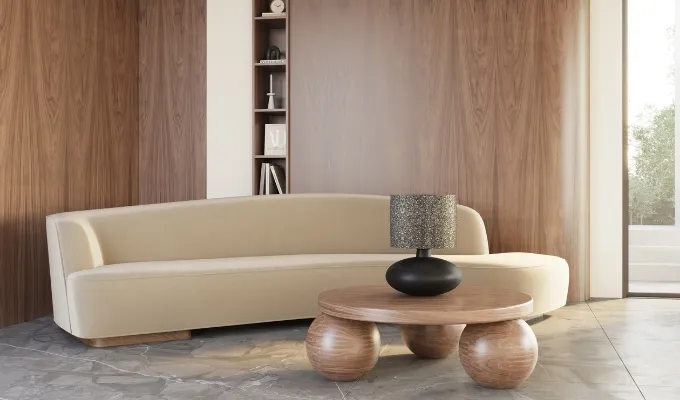
How to match a lampshade lamp to your interior style - inspiration
You already have a clearly defined style in which you decorate your interior and are looking for a specific lampshade lamp that will emphasize the chosen style? We have some specific projects for you.
- if you have decided on modern classic or frenchc chic style bet on light, beige, gold or gray lampshades and explore the salvador lamp collection, Sawa Velvet New and warm collection of Lora table lamps;
- for minimalist, modern, austere interiors are best suited to lampshades made of white or black smooth material, as well as lamps with lampshades made of steel - we especially recommend your attention apolin lamp collection and if you're looking for lamps that combine simplicity with functionality, check out botanica collection.
- scandinavian design as well as Japandi style interiors will perfectly complement table lamps with textile lampshades in earthy colors, gray or white. If you like the combination of Scandinavian simplicity with Japanese aesthetics check out our japandi style lamps, and in particular the collection of Sawa Natur i Sawa Wood.
Lamps with fabric lampshade - advantages
Introducing lamps with textile lampshades into the interior has many advantages and enriches the space in many ways. Lamps with lampshade:
- warm up interiors with the introduction of textile elements (on the same principle as decorative pillows, curtains, upholstery, etc.),
- soften the light and make its glow gentle, allowing you to create an intimate atmosphere conducive to tranquility or long evening conversations
- can become a contrasting color element in the interior - breaking its monotonous, monochromatic character
- conquer the selected color scheme of the interior, becoming another element that matches its shade to the selected color of accessories / decor
- are an element that emphasizes the selected interior style
Did you know that?
The shape of the lampshade, usually depends on the shape of its base. Round bases, or those with a rounded form, look best with a round lampshade. Angular bases, in the form of a cuboid, etc. look more attractive with rectangular or square lampshades.
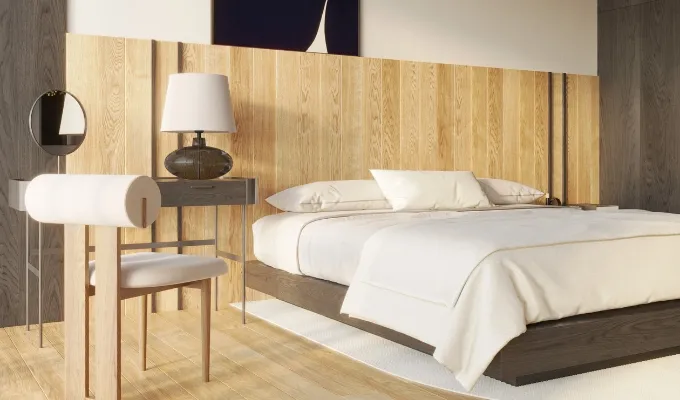
How to clean a fabric lampshade?
Whether our lampshade is made of velour, linen or silk, the material has the ability to attract dust. So, in order for a lamp with a fabric lampshade to remain a decoration of the interior, and its modern design, not to succumb to the insidious nature of dust, it is worth once a week or every two weeks to "vacuum" the lampshade, during routine cleaning, and at least once a year to remove it for thorough cleaning.
Depending on what material your lampshade is made of, you can clean it:
- with a feather or wool dust broom
- with a microfiber cloth
- with a soft clothes brush
- with a clothes cleaning roller or masking tape
- hair dryer
- with a vacuum cleaner with a suitable nozzle - a soft, round brush (only if the lampshade is not made of very delicate fabric and does not have tassels, etc.
- cotton glove (especially if the lampshade has elements made of glass, then you will avoid finger marks)
Don't try to clean fabric lampshades with an ordinary dust cloth. Such treatment will have the opposite effect and cause dust to settle even more readily on your lamp. Also remember to unplug the lamp before "vacuuming" it and to always clean the lampshade from top to bottom.
- If your lampshade is heavily dusty, start by removing the outer layer of dust with a hair dryer or vacuum cleaner to avoid dust rolling in
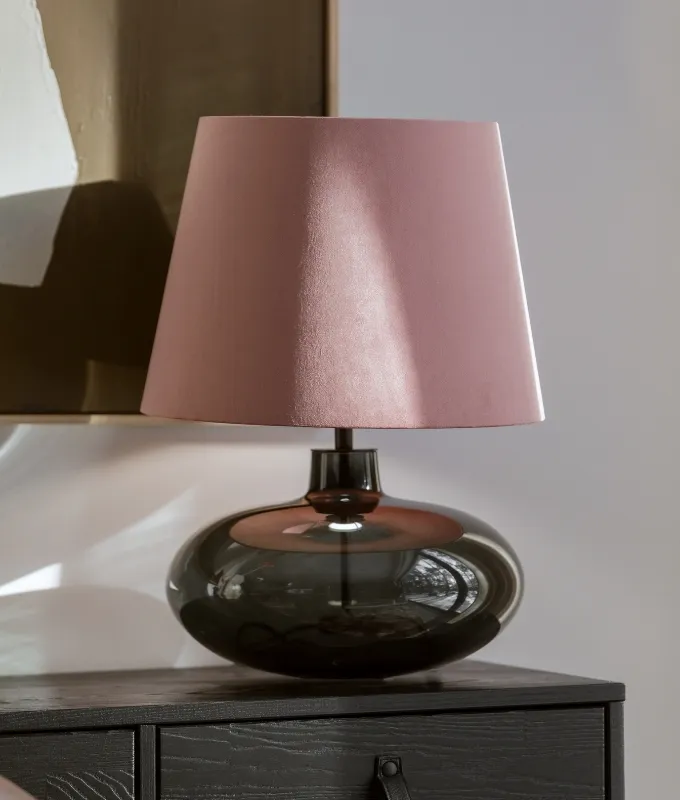
Lamps with lampshade from Kaspa
Kaspa offers many lamps with fabric lampshades. Below we have gathered some of their most important features, which we hope will interest you and make you eager to invite the selected lamps to your interior.
- all Kaspa lampshades are made entirely in Poland,
- lampshades are finished by hand with piping, with the utmost care and attention to detail,
- the stitching at the joint is very aesthetic and prevents the lampshade from unraveling under the heat of the bulb or over time,
- lampshades in each model are individually designed and manufactured to capture the perfect proportion relative to the base of each lamp (as opposed to lampshades of lamps completed using lampshades available at any given time in the factory),
- some lampshades are characterized by additional filling from the inside in the same fabric as the outside of the lampshade or in copper color (sawa lamp) or gold (lORA lamp collection),
- velvet lampshades shimmer in the light and have the texture of velvet, which means that the hair of the fabric can be arranged with the movement of the hand and depending on the angle of the light, you get a slightly different shade of the material,
- fabric lampshades in SALVADOR lamps are made of high-quality fabric with a blend of silk threads, with an interesting, slightly shiny structure. The edge of the lampshade is elegantly finished, thanks to the wrapping of the fabric to the center (without piping). Gold-colored filling on the inside, beautifully reflects and diffuses warm light.
